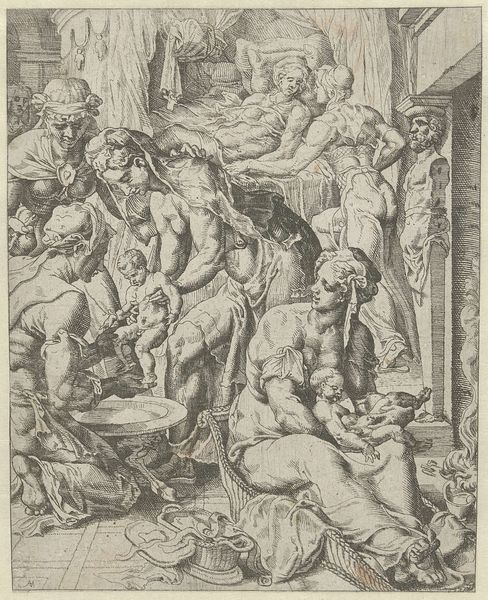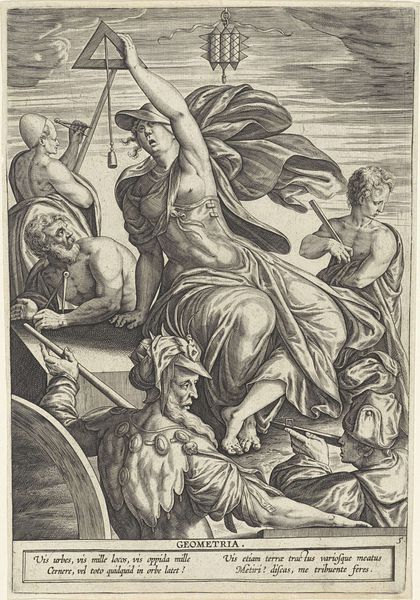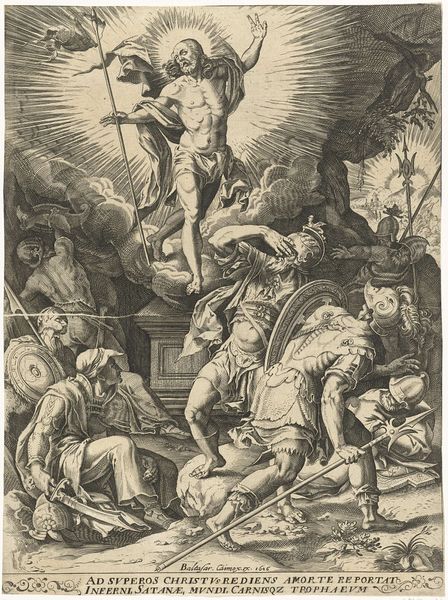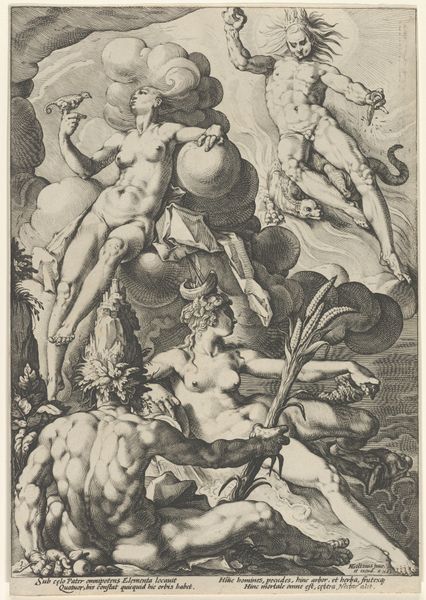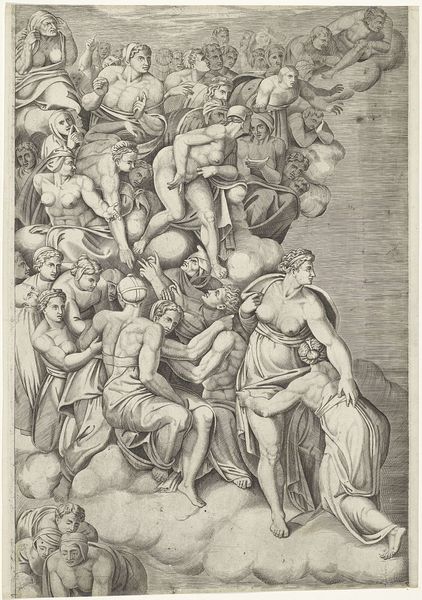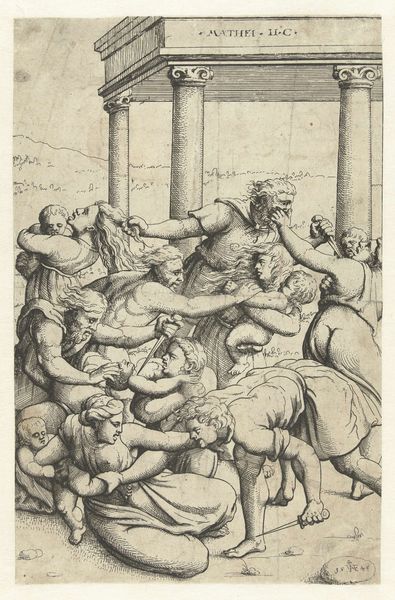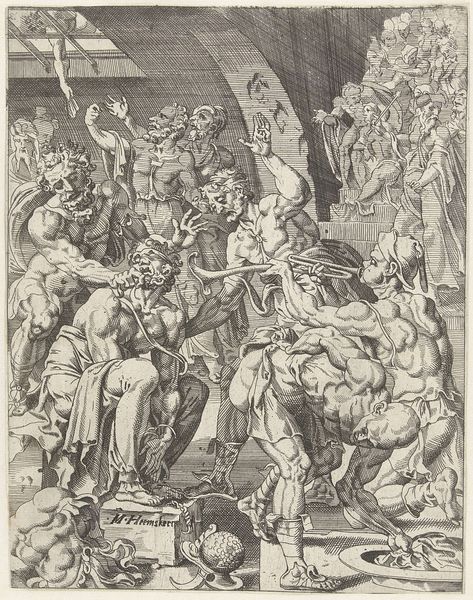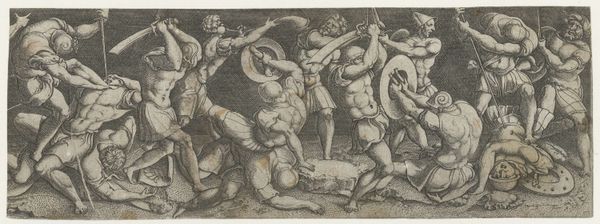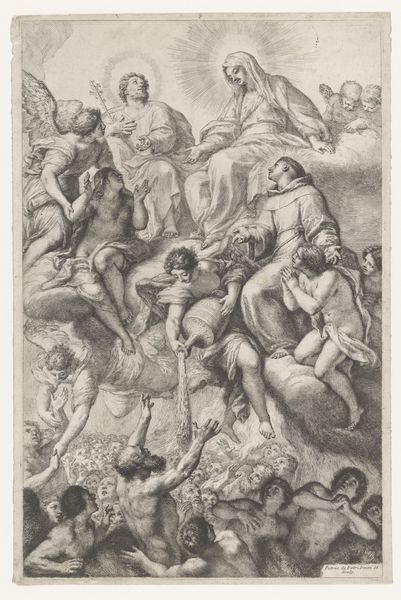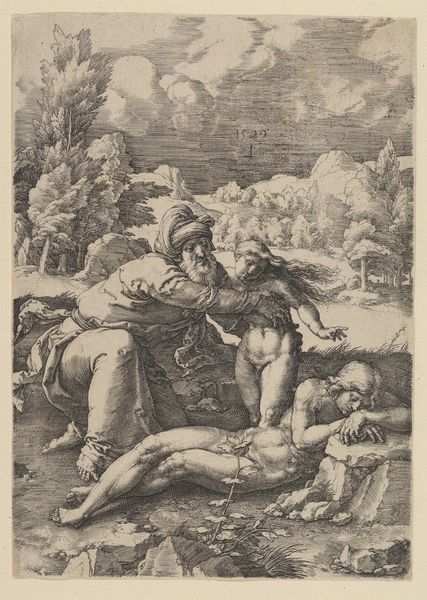
engraving
#
caricature
#
figuration
#
romanesque
#
history-painting
#
engraving
Dimensions: height 205 mm, width 162 mm
Copyright: Rijks Museum: Open Domain
Editor: We are looking at “Fight between five Roman soldiers,” an engraving from between 1520 and 1562, by Monogrammist AC. It's quite a chaotic scene! There's so much muscular energy and frantic movement, and the figures are so exaggerated. What stands out to you about this piece? Curator: What I notice is how this artist is engaging with the public perception of historical events and artistic movements. This engraving presents a scene ostensibly of Roman soldiers, a theme aligned with the Romanesque movement's fascination with classical antiquity. But the exaggerated anatomy verges on caricature, a satirical take on history. Editor: So it’s not meant to be taken as a purely heroic depiction? Curator: Exactly. Think about it. This print circulated within a specific social and political landscape. Consider the market for prints at that time. It was growing! Broadsheets allowed visual narratives to be disseminated quickly and widely. This piece participates in that discourse. Was it promoting an idealized Roman past or perhaps commenting on the contemporary conflicts of its own time? Editor: So, by referencing Roman soldiers, it was actually making a statement about 16th-century society? Curator: Precisely! How institutions – like the print market – influenced both the creation and the interpretation of art. And let's also note the setting – not a grand Roman forum, but a craggy, less-than-ideal location. How does the artist manipulate known and acceptable visual forms to question ideas around power and valor? Editor: I never thought about art from the perspective of the markets that support them. I assumed the Romanesque period always involved idealised history. Curator: Well, that's why we keep looking and keep asking. Considering those contexts often enriches and challenges our first impressions.
Comments
No comments
Be the first to comment and join the conversation on the ultimate creative platform.

